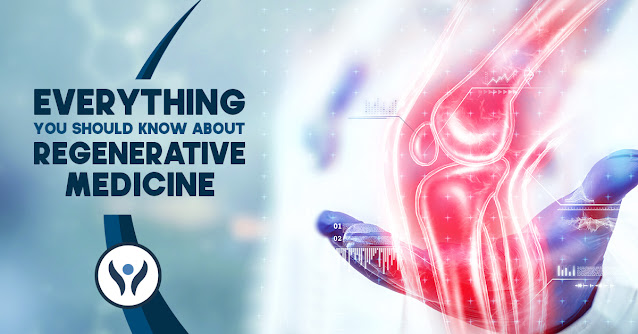Conditions or ailments ranging from hair loss to arthritis are successfully managed by conventional treatments such as medications, physical therapy and steroid injections. However, they could offer relief from symptoms for a very short duration.
While looking for permanent relief, doctors usually recommend surgery as a last resort. If you have experienced the same, hold on! Here comes non-surgical regenerative medicine that might work for you.
WHAT IS REGENERATIVE MEDICINE?
The phrase “Regenerative medicine” was coined in the year 1999.
“Regenerative” is a term that means revival and restoration. Regenerative medicine not only treats symptoms but also aims to replace damaged tissues with new tissues by restoring the body’s healing mechanism, reducing inflammation and pain and restoring joint mobility. It tackles the root cause of the ailment.
As we age, our body’s healing mechanism becomes weak. Doctors collect regenerative cells and inject them into the affected area to enhance recovery. The outcome would be a significant improvement in pain relief and joint function. Thus, regenerative medicine proves to be an effective alternative to invasive surgery.
WHAT CONDITIONS DOES REGENERATIVE MEDICINE TREAT?
Regenerative medicine can treat many medical conditions and ailments, and it’s proven safe and effective. And here’s a list of a few:
- Shoulder – Arthritis, Osteoarthritis, Rotator Cuff Tendinitis, Rotator Cuff Tear, Labral Tear or Degeneration, Shoulder Impingement, Frozen Shoulder, SLAP lesion, ACJ, SCJ & C-C Ligament, and Anterior & Posterior Band of IGHL
- Knee – Arthritis, Osteoarthritis, Patellar Tendinitis, Medial Collateral Ligament/Lateral Collateral Ligament, Sprain or Partial Tear of the Posterior Cruciate Ligament, Bone on Bone Cartilage Wear and Tear, Meniscus Tear, Cartilage Defects, Tendinopathy
- Elbow – Arthritis, Osteoarthritis, Bursitis, Golfer’s Elbow, Tennis Elbow
- Ankle and Foot – Arthritis, Osteoarthritis, Ankle Sprains, Plantar Fasciitis, Ligament Sprain or Tear, Achilles Tendinopathy
- Hip – Arthritis, Bursitis, Osteoarthritis, Tendinopathy, Labral/Labrum Tear
- Hand and wrist arthritis, thumb arthritis
- Hair and skin problems
IS REGENERATIVE TREATMENT PROVEN?
As mentioned, the term “regenerative medicine” was coined in 1999. Though the concept is older, it gained acclaim in recent years due to the success rate of regenerative treatment.
Regenerative cells use natural substances to grow into varied types of cells. This is known as differentiation. For the question of whether regenerative is proven, the answer is both yes and no. This treatment is well-proven, and doctors use it often for healing purposes. Unlike conventional methods, regenerative medicine treats the condition’s underlying cause and symptoms.
There are various research studies to prove the effect of Regenerative medicine on treating many diseases, especially orthopaedic conditions such as arthritis in the knee and hip.
The application of using regenerative cells for tissue transplants, new organ growth, and chronic ailments cure is still under research, and many advances are made every year.
WHAT ARE THE TYPES OF REGENERATIVE THERAPY?
Doctors administer regenerative therapy in five types:
- Combinational therapy
- Prolotherapy
Let us go through them one by one in detail:
PLATELET-RICH PLASMA (PRP) THERAPY
Growth factors are needed when the degree of tissue damage goes beyond the body’s natural ability to self-heal. If your body cannot secrete enough growth factors, the doctors will insert them. This is where PRP helps!
The injection of PRP (Platelet-rich plasma) releases growth factors from platelets to stimulate your body’s natural healing mechanism to heal the damaged tissue quickly, followed by its regrowth.
In this PRP procedure, the doctor will extract blood from your body and centrifuge it to separate Platelet Rich Plasma aseptically. The PRP then will be injected directly into the damaged area using ultrasound guidance.
STEM CELL THERAPY
Stem cells are primitive non-specialised cells that can develop into any specific cell by constant division and cell propagation. Hence, a regenerative treatment using stem cells can be a life-changer for patients, especially those with degenerative arthritis.
Doctors typically extract stem cells known as mesenchymal cells from bone marrow aspirate concentrate or adipose (fatty) tissues. After harvesting and processing the stem cells, introduce them under ultrasound guidance into the affected tissue for quicker healing and regrowth.



No comments:
Post a Comment